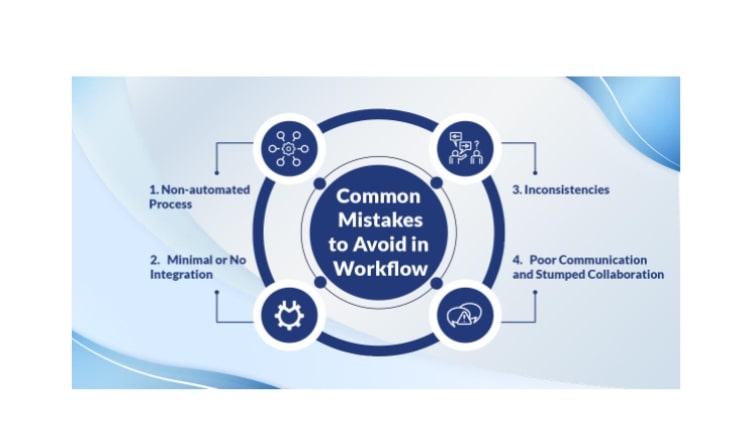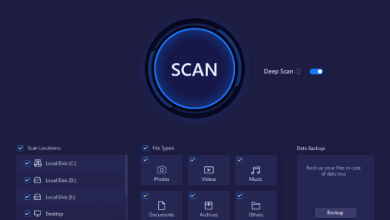4 Mistakes to Avoid in Your Contact Center Workflow

Building an unbeatable customer experience requires you to follow hundreds of right steps while ruining it requires just one mistake. Technology has immensely transformed the way businesses operate their contact centers, and autodialers eliminated the need for manual dialing. CTI integration simplified the customer information sharing challenges. Cloud viably eliminates the enterprises’ requirements to own, work, and manage on-location contact centers. Nevertheless, many contact centers are still not incorporating and utilizing cloud technology to its maximum potential.
When a prospect decides to call in customer-facing businesses, it’s because they are looking out for help and an informed voice on the other end. Contact centers that can meet these requirements need software to keep up with modern expectations. While a slight mistake can ruin the entire customer’s experience with the call centers and executives.
Please visit for more information: Hyperverse
There are a lot of critical factors that contribute to the best experience, such as right/appropriate digital tools. It is imperative to address the customer’s issues and dissatisfaction on time and determine what leads to disappointment to ensure an enhanced retention rate. Thankfully, technology comes to the rescue and helps to cope with the situation effectively — the future of good customer support lies in digital transformation.
One of the most critical questions that need to be addressed is how businesses can improve their efficiency.
The answer lies in three words: Contact center workflows.
Contact center workflows act as a powerful resource for the companies to stay on top of everything and act in the right direction. However, workflows are effective only if three factors are considered, i.e., teamwork, prioritizing productivity, and organization. We are all aware of the importance of enhanced automation, systems, and process. We all know the significance of improved processes and good systems.
To ensure time efficiency and on the project’s budget, one needs to work on priorities, minimize delays, and maximize the resources. The answer to providing all of this is Good Workflow. The proper execution of workflow will not only improve project efficiency but also help businesses to perform better. Thus, what makes a workflow good or bad, and what common mistakes should you be avoiding while incorporating workflow at your contact center? Well, take a deep diver below and get your answers. For more Info visit the monday.com
What is a Good Workflow?
Good project management and workflow implementation at contact centers go hand in hand. Unfortunately, it takes just one loophole in the chain to spell trouble, right starting from communication with business executives or agents to make sure your customer’s query has been resolved. Therefore, businesses need to integrate practical, customized, and automated workflows to cope with the gaps.
A good workflow provides deep insights into business processes right from the starting to the end-point. A well-planned and designed workflow streamlines the entire business process by eliminating superabundance and duplication of work. Improved communication, enhanced visibility of work, and control over the business process are some of the key advantages of good workflows.
A good workflow will help you take the stress out of managing projects, as well as:
- Drive efficiencies: Automated workflows speed up the process, help reduce risk, increase productivity, and save you time and money.
It enables to track employees’ productivity in each department and helps to organize projects on time.
- Remove redundant tasks: Workflows help streamline the communication in every stage/phase, helps identify redundant tasks
- Improve outcomes: Workflow can significantly help to improve the overall outcomes and project success.
- Enforce accountability: Workflows can help to reduce risk, increase productivity, save time and money by enforcing checklists and accountability across businesses.
Common Mistakes to Avoid in Workflow

Poorly executed workflows can lead to disastrous mistakes that can derail entire business projects. We have mentioned 4 four common workflow mistakes that need to be addressed and avoided:
Workflow mistake #1: Non-automated Process
Without automation, enterprises reveal their businesses to risks from mistakes made by human error. Automation reduces mundane work and streamlines entire tasks and communication. It also allows businesses to set up custom workflows that suit their different projects based on various departments and teams and further schedule alerts for the actions. This functionality lets enterprises see where their workflows are delayed, get live status updates, and remove manual processes.
Let’s say a customer goes to the insurance company and asks to change his address in the documents, to avoid any sort of confusion or delays in case any document needs to be delivered to the customer. Your current workflow might look like this:
- Invoice sent electronically to the concerned department
- Invoice printed by the department
- Invoice manually documented and scanned for records with financial documentation
- The address will be updated manually
- The customer gets the receipt
While the above process completes the work, it takes more than usual time and decreases the agent’s productivity that can be enhanced with the help of automated systems. There are innumerable steps in this process, they can be shortened and automated with workflow. Manually inputting information takes more time and increases the risk of human error, while automated workflow can help in saving time and enhancing productivity.
Workflow mistake #2: Minimal or No Integration
Workflow integration connects business systems, allows smooth transfer of data between various departments and platforms. In short, it bridges the gaps between applications, enables processes to be automated while providing more accurate data.
Unintegrated workflow systems can lead to unrequired added costs, exhausted resources, and time delays. By integrating all of the crucial project information, devices, and project stakeholders on one central platform, businesses can streamline the workflows to reduce errors and speed up the process.
Workflow mistake #3: Inconsistencies
Inconsistent and old-fashioned workplace processes are a major time-consuming burden globally. Research has proven that top-performing companies invest in their employee well-being and those that have agile processes based on empowerment of employees to make routine decisions.
Lacking a clear set of instructions for all departments and management systems invites errors, work delays, and wastes time. It can be resolved by integrating a centralized platform and creating a standardized workflow that produces consistent project outcomes for all agents and businesses. It also enables enterprises to accumulate valuable data, fine-tune their business processes and avoid future issues.
Three key aspects to consider and improve consistency in the contact centers are:
- Ensure there is a proper interaction and regular meet-up of management and agents to connect and communicate their concerns and better understand business goals and visions.
- Management needs to communicate well with the various departments and adhere to their words and policies to ensure consistency in business.
- Commitment towards the plan of action throughout the process. Don’t switch goals or focus halfway through a project.
Workflow mistake #4: Poor Communication and Stumped Collaboration
Business/contact center workflows are most efficient when team collaboration tools power them. Most workflows and business projects involve team members from all departments- from ideation with the creative team to execution and distribution. Without effective collaboration and integration of tools, employees across departments find it hard to keep themselves aligned towards the same goal; thus, progress is stumped, time is wasted, and efficiency is compromised.
A properly optimized workflow helps keep track of internal and external teams by streamlining management. In addition, it ensures high transparency and visibility at every project stage, reduces errors, and encourages communication between teams.
Ready to Fix your Workflows?
The best way to avoid the most common workflow mistakes is to forecast, plan ahead, and create a properly aligned strategy to business goals. One of the easiest ways to implement successful workflows is via a cloud contact center. The right system will help businesses streamline and automate repeatable business tasks to ensure greater efficiency and less room for errors.
With centralized workflow in place, Project Managers and Team Leaders can make quicker, smarter decisions and enable teams to coordinate tasks between departments in a more agile and productive way. Implementing a centralized and automated workflow helps businesses drive efficiency, profitability, and productivity across your whole business.
Author Bio
Shruti Bansal is a tech enthusiast who wears multiple hats for Ameyo, a cloud contact center company that manages content, social media, and inbound marketing. Passionate about businesses technologies that are reshaping the customer experience.





